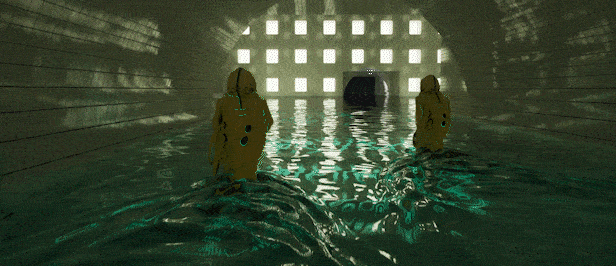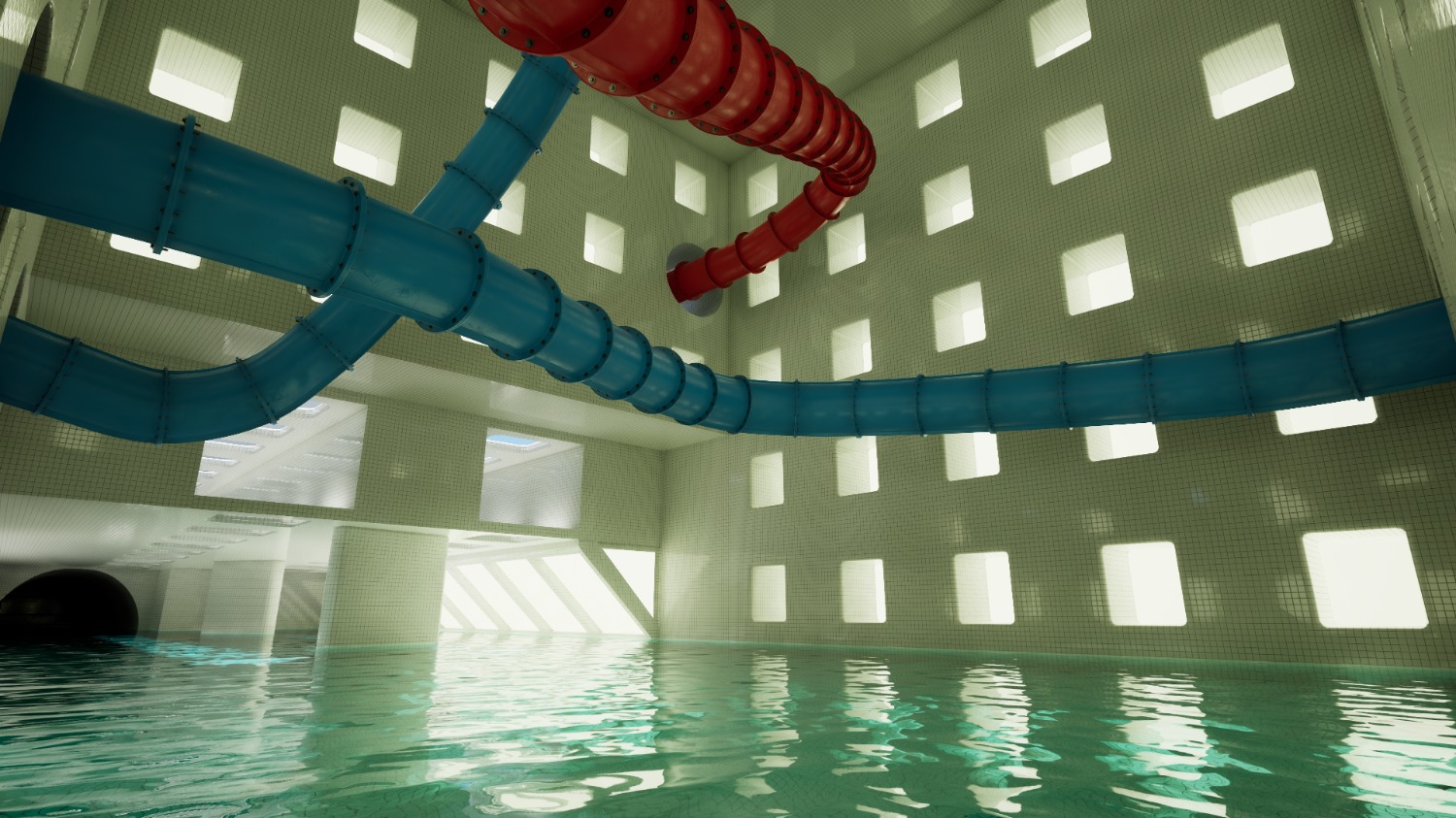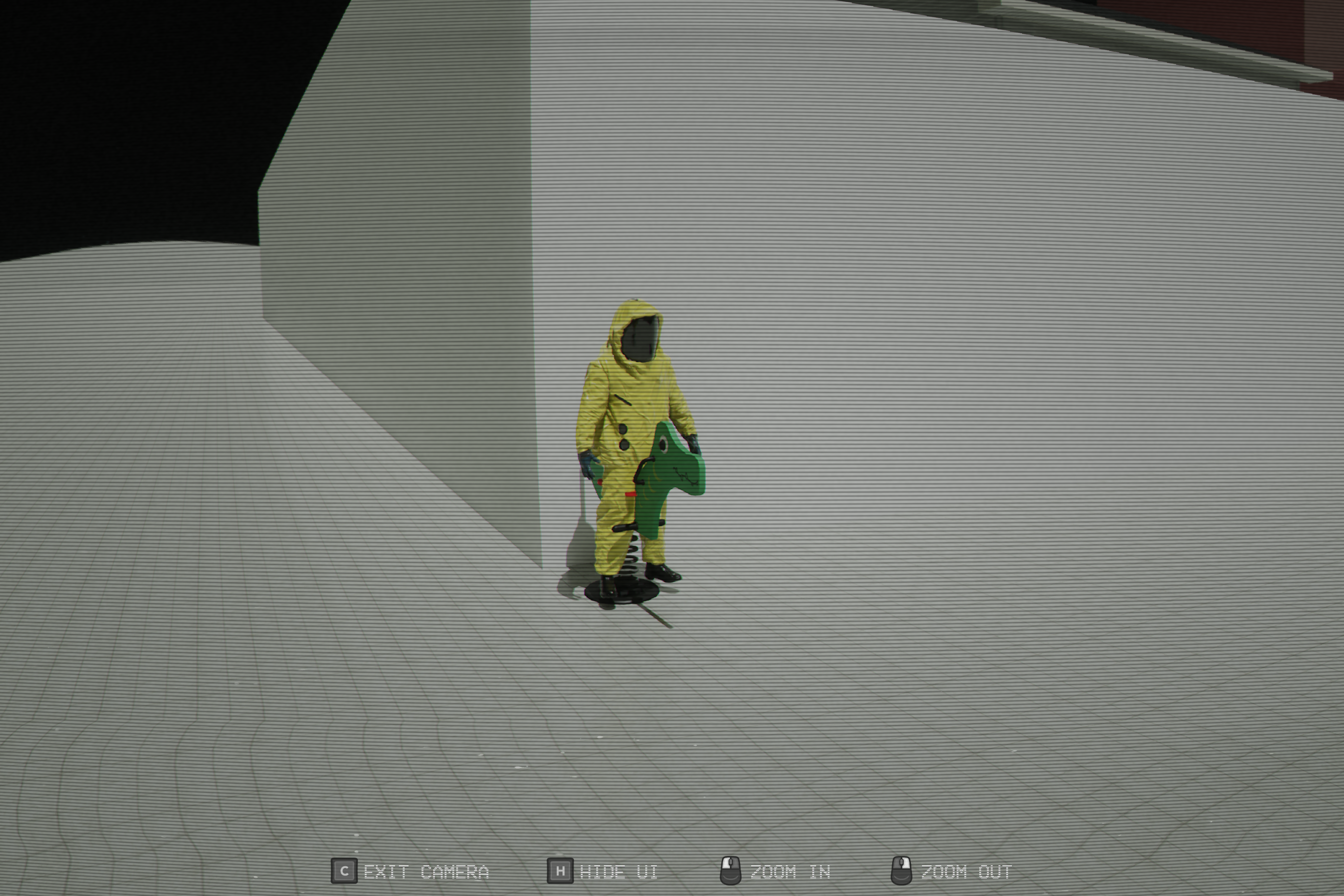Backrooms: Escape Together is a cooperative survival horror game set within the unsettling, liminal spaces of the Backrooms mythos. Players must work together to survive procedurally generated levels, solve environmental puzzles, and manage scarce resources—all while evading hostile entities unique to each level.
As a Game Designer, I’ve contributed heavily to both core level development and gameplay systems—working across procedural generation, replicated multplayer mechanics, and scripted encounters using Blueprints and C++.
Upon joining the team, the game featured 10 core levels:
Each level is designed to provide a distinct player experience—some prioritize exploration and calm, while others challenge players with tense stealth, puzzle-solving, and sanity management.

Level 37 - "The Poolrooms" is an infinite series of connecting pools. This level is non-hostile, and its all about exploring your environment. In order to enhance this level, I created custom, procedural slides.
This was done with a combination of Unreals PCG System, Splines, and Properitery Procedural Generation used for the level. The goal is to prompt curiosity and wonder in the player, and to reward their exploration with visual interest.


To expand the existing in-game camera mechanic, Backrooms: Escape Together integrates a new real-time recording system that lets players capture MP4 footage directly from gameplay — including in-game audio and voice chat. The goal was to evolve the camera from a purely visual prop into a practical, player-driven recording tool that feels native to the core experience.
The feature was implemented using FFmpeg for runtime encoding and Unreal’s Gameplay Ability System (GAS) for player interaction logic.
Together, these systems allow for fully in-engine video capture that’s fast, responsive, and consistent with the game’s interaction framework.

Recording is treated like any other gameplay action — handled through the Gameplay Ability System.
This ensures consistency in multiplayer behavior, input handling, and UI feedback.
This addition turned a simple visual camera into a functional recording device — a small but significant design step that improved usability, replayability, and player expression while maintaining stable performance and consistent interaction patterns.

We maintain an active dialogue with our 80,000+ member Discord, which has proven essential to understanding player expectations. Their insights help shape how levels are designed, what mechanics to prioritize, and how horror is best delivered in multiplayer environments. Come Say Hi!
Working on Backrooms: Escape Together has pushed me further than any project to date. It’s deepened my understanding of agile production, Unreal Engine systems, and how to marry technical design with player-first thinking.
As we continue to grow the game, I’m excited (and a little scared) to see what horrifying level comes next.